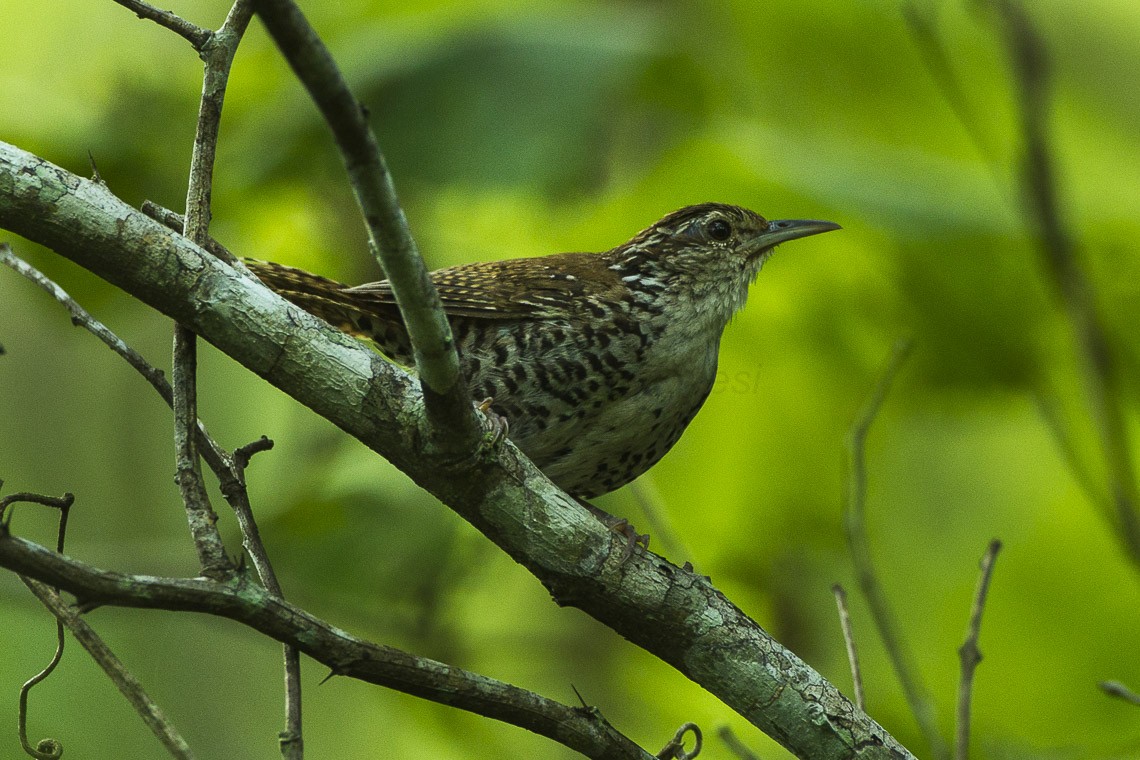Banded Wren
A species of Thryophilus Wrens Scientific name : Thryophilus pleurostictus Genus : Thryophilus Wrens
Banded Wren, A species of Thryophilus Wrens
Botanical name: Thryophilus pleurostictus
Genus: Thryophilus Wrens
Content
Description General Info
 Photo By Francesco Veronesi , used under CC-BY-SA-2.0 /Cropped and compressed from original
Photo By Francesco Veronesi , used under CC-BY-SA-2.0 /Cropped and compressed from original Description
The banded wren (Thryophilus pleurostictus) is a small songbird of the wren family. It is a resident breeding species from central Mexico to Costa Rica. It was formerly placed in the genus Thryothorus (Mann et al., 2006). This wren breeds in lowlands and foothills from sea level up to 800 m altitude in open or scrubby woodland, including forest clearings and second growth. It mainly occurs on the Pacific side of the central mountain ranges. Its flask-shaped nest has a long entrance tube angled downward and is lined with fine grasses. It is constructed 1–2.5 m high in a fork of a thorny tree or shrub, often close to a wasp nest. The female alone incubates the three or four unspotted white or pale greenish-blue eggs for about two weeks to hatching, and the young fledge in about the same length of time again. The adult banded wren is 13.5 cm long and weighs 20 g. It has chestnut brown upperparts, strong white supercilia, a brown stripe through the eye and black streaking on the white cheeks. The underparts are white with much black barring on the lower belly and flanks. The wings and tail are barred with black. Young birds have duller upperparts and dull white underparts, faintly mottled with dusky brown. The call of this species is a nasal cherrrt or a rattle and roll, kert rrruk kert rrruk, and the melodious and complex song is a mix of clear whistles and musical trills. The banded wren forages actively in low vegetation or sometimes on the ground in pairs or family groups. It eats mainly eats insects, spiders and other invertebrates. 
Size
15 cm
Nest Placement
Cavity
Feeding Habits
Banded Wren's diet consists mainly of invertebrates and spiders. This bird forages for food by actively searching in foliage. It has specialized techniques for hunting its prey, often at dusk or dawn. Unique adaptations include a preference for spiders, setting it apart in its dietary niche.
Habitat
Banded Wren typically inhabits arid scrub-forests, tropical deciduous forests, and areas with second growth. It is also found in swamp-forests of El Salvador and occasionally in mangrove swamps of Honduras and Costa Rica. This species adapts to a range of elevations, living at sea-level up to 1600 meters in Mexico, 1100 meters in Honduras, and 800 meters in Costa Rica, favoring dry environments across these broader geographic regions.
Dite type
Insectivorous
General Info
Feeding Habits
Bird food type
Species Status
Not globally threatened.
Scientific Classification
Phylum
Chordates Class
Birds Order
Perching birds Family
Wrens Genus
Thryophilus Wrens Species
Banded Wren